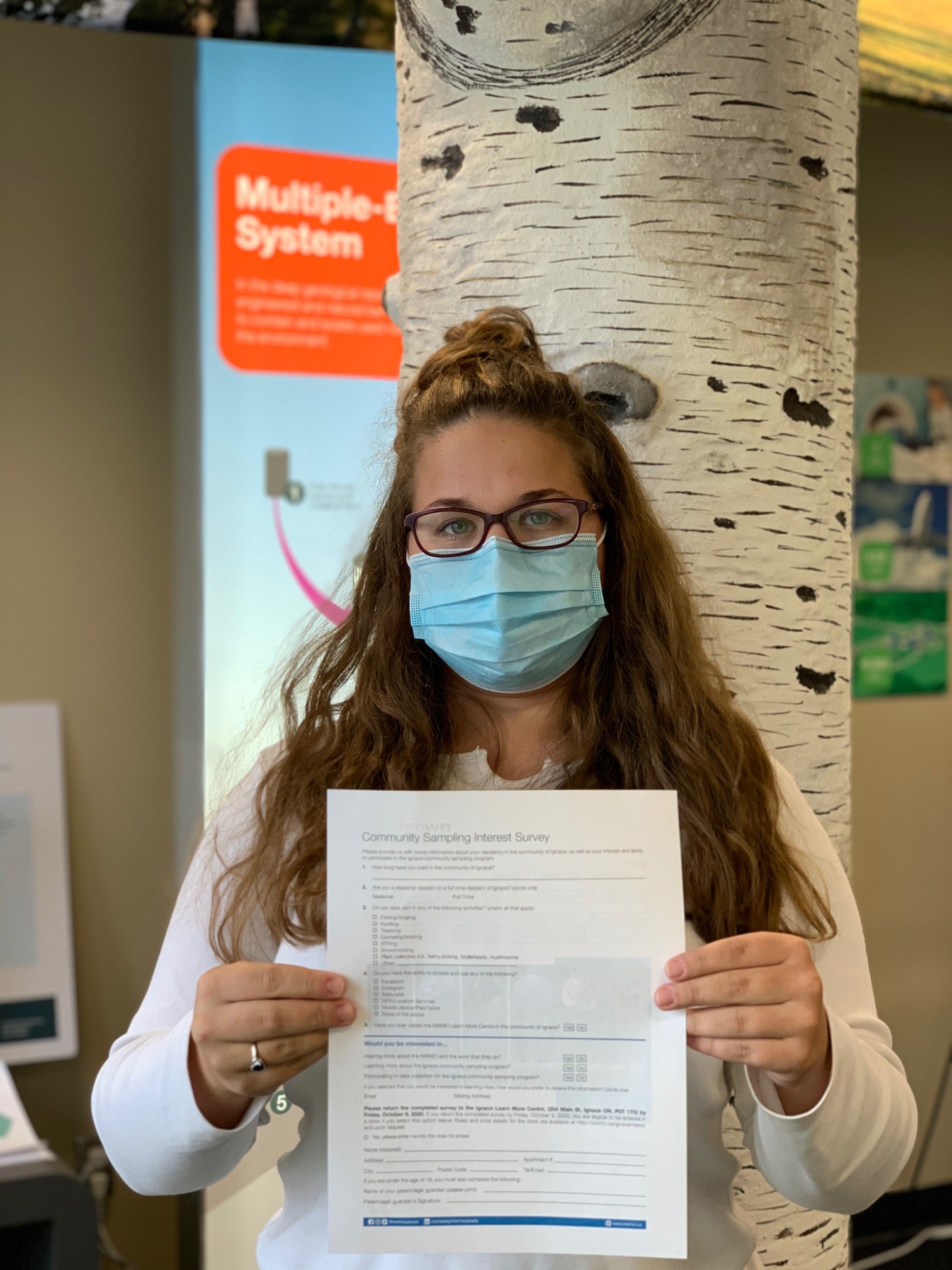In Ignace, Ontario, those who know the flora and fauna the best are stepping up to help the NWMO better understand the local environment.
As part of our work towards Canada’s plan for the safe, long-term storage of used nuclear fuel, the NWMO asked area residents to share with us how they can help us collect samples to assist our environmental monitoring work.
Earlier this fall, we surveyed community members who hunt, fish or gather wild foods about how they would be willing to help us collect tissue samples of local plants and animals. These samples will then be used to help us establish an environmental baseline as part of our monitoring of the local area.
The survey asked participants questions about activities they take part in including hunting, fishing, snowmobiling, birding, berry picking and the use of natural apps, which was followed by a query about whether they would be interested in hearing more about the program or be interested in participating.
Two-thirds (67%) of those who participated said they would be willing to help the NWMO collect these important samples.
“The community has shown us they are very interested in helping us with our work,” said Joanne Jacyk, the NWMO's Section Manager for Environmental Assessment. “Understanding the current status of the environment in the area is an important step toward ensuring we can protect both people and the environment if Ignace is selected to host Canada’s plan.”
“Tissue sampling is an important step in environmental monitoring, and it will help us understand the health of the local ecosystem today, so we can better protect it tomorrow,” she said.
Environmental monitoring is a key component of the NWMO’s work as it studies the area around Ignace for its suitability to host a deep geological repository. That data will help inform the NWMO’s efforts to establish environmental baseline monitoring, a process by which we can gain a complete picture of the health of the local environment so we can properly avoid, mitigate and measure the impact of any of our work in the area may have.
“The survey told us that a lot of residents are already aware of our work. All but one of the respondents said they visited one of our offices or exhibits,” said Daila Delescaille, a Developmental Student and Environmental Technician in the NWMO’s Environmental Assessment department. “It’s great to see so many people in the community stepping forward to help us gather these important samples and data.”
Ignace is one of two communities remaining in the NWMO’s site selection process. Canada’s plan will only proceed in an area with informed and willing hosts, and the NWMO plans to select a site by 2023.
The NWMO hopes to work with the local community throughout the remainder of the hunting and fishing seasons and well into the winter to collect tissue and flora samples. For example, moose hunters can help by providing tissue samples and someone who picks wild berries could provide some for testing as well.
“We want to work with the community toward selecting a site for Canada’s plan,” said Jacyk. “They know the area best. Who better to provide samples than those who have been living and working here for so long?”
This survey is just one of the ways the NWMO is working with members of the Ignace community. Over the summer and into the fall, we held in-person and online workshops to gain their feedback about our environmental work and other site selection activities in the area.
The NWMO is tasked with implementing Canada’s plan for the safe, long-term management of used nuclear fuel in a manner that protects people and the environment and in an area with informed and willing hosts. Ignace and South Bruce, both in Ontario, are the two communities remaining in our site selection process.

